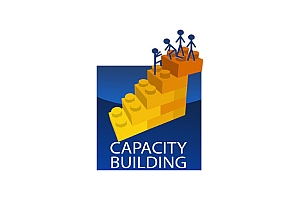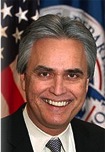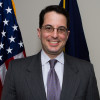SUCCESS INSIDE & OUT: ALIGNING YOUR INTERNAL RESOURCES TO REFLECT THE SUCCESSES OF YOUR COMPANY
Sequestration, budget cuts and the Continuing Resolution (CR) have frozen contract awards and new work. GTSC invites you to take this opportunity to prepare for the fall — when the allocations will flow again – and you’ll need to be primed and ready!
Through the GTSC’s work with all the companies and officials involved in the Federal homeland and national security market, we’ve learned a number of lessons and best practices to mitigate some of the traditional “thorns” in a small business’ side. When implemented, these practices assure your success with your Federal clients, large business primes and other partners. Join GTSC to shore up your resolutions to focus on your strategic plan, your marketing strategy and your legal, human resources and insurance needs. In Part I of this two-part series about building your internal capacity, the sessions will give you an in-depth look at strategic planning, marketing, talent acquisition, legal issues and ethics to expand your company’s reach in the Federal homeland and national security sector. Part II on Tuesday, March 12 will focus on every stage of the proposal process — from the RFI to your response to an RFP. Register today!
Part I Agenda:
8:00AM: Networking/Coffee Hour
8:30AM: Welcome & Opening Comments with Kristina Tanasichuk, President & CEO, Government Technology & Services Coalition
8:40-9:10 AM: KEYNOTE MENTOR SESSION
There are several unique attributes that make certain small businesses repeat partners for large primes. Ms. Petera will provide a “Top 5” list based on her experience as both an appointed official and as the client lead for one of the most prestigious IT companies in the country, Harris IT Services.
Anne Petera, former Assistant Secretary for Intergovernmental Affairs, U.S. Department of Homeland Security and DHS Client Executive, Harris IT Services,
9:15 AM – 10:30 AM: Session #1
WORKING WITH THE BIG GUYS: HOW TO MANAGE YOUR RESOURCES FOR BOTH STRATEGIC AND TACTICAL PLANNING
Large Federal contractors want — and need — to partner with small businesses to be successful in today’s Federal market. This session will show you how your strategic plan — or lack thereof — can impact how potential partners and clients view you. Are you a good partner? Is your organization able to deliver on its promises from beginning to end? How do your partners see and assess you, your company and your capabilities? Learn how to integrate your strategy and strategic plan into your thinking to improve your capabilities in all of your business relationships.
Mary-Claire Burick, CEO, MC Strategy and Strategic Advisor, GTSC
Chris Lawrence, Vice President, Engility and Mentor, GTSC
Josh Kussman, Sr. Vice President, The Sentinel HS Group
10:30 AM – 11:45 AM: Session #2
MARKETING: YOU’VE GOT THE PLAN, HOW DOES THAT TRANSLATE TO YOUR FEDERAL CLIENTS?
How do you sell yourself in the market? Are you showcasing your core capabilities in the best ways possible? Keep your company’s “name on the brain” of larger Federal contractors with these marketing tips. It is simpler than you think to maximize your relationships with them. Don’t forget to maintain an updated profile on the GTSC website – a large company’s database resource for finding subcontractors.
Mary Ann Stoops, Principal, Savvy Marketing Partners LLC
Victoria Laing, Senior Account Manager, Gotham Government Solutions
Earl Holland, President, Growth Strategy Consultants and Strategic Advisor, GTSC
11:45 AM – 1:00 PM: LUNCH KEYNOTE PANEL: WHY DOES THIS MATTER?
Join us for this discussion by several of GTSC’s mentor companies on how and why a lack of strategic planning can impact your success with both your Federal clients with your other partners, how they view and evaluate potential partners and what attributes draw them to repeat partnerships.
Wayne Pizer, Vice President Small Business Programs, L3 STRATIS
Andrea Marsh, Senior Market Manager and DHS Lead, Battelle
Mike Kelly, Senior Director, Infrastructure Protection & Security, TASC
1:00 PM – 2:15 PM: Session #3
GOT TALENT? HUMAN RESOURCES FOR SMALL BUSINESSES
Carrying out a contract is contingent on having the right talent for the project. How does a small to medium-sized company market themselves to potential talent? How can you find the right people and staff your project with high quality individuals?
Kathleen Smith, Chief Marketing Officer, ClearedJobs.Net
Jen Fritz, Director, Federal Government Solutions, CareerBuilder
Rob Edmonds, Director, Sales and Marketing, Uniplus and Chair, GTSC Small Business Collaboration Group (SBCG)
2:15 PM – 3:30 PM: Session #4
YOUR LEGAL, INSURANCE AND ETHICAL RESPONSIBILTIES: AN UPDATE
The landscape of legal, insurance and ethical requirements is constantly changing. Each “mistake” made by contractors or by government officials results in a slew of new requirements that can impact your responsibilities. Join us for a look at the latest changes in these areas from some of the foremost experts in their fields.
Richard Conway, Partner, Dickstein Shapiro
P. Allen Haney, CEO, P. Allen Haney Company
Amy Hutchens, General Counsel, Vice President Compliance & Ethics Services, Watermark Risk Management International, LLC.





 Earl S. Holland III is the President and CEO, Growth Strategy Consultants, Strategic Advisor with the Government Technology Services Coalition and former Vice President of the Washington Chapter of the Association of Strategic Alliance Professionals. You can reach him at:
Earl S. Holland III is the President and CEO, Growth Strategy Consultants, Strategic Advisor with the Government Technology Services Coalition and former Vice President of the Washington Chapter of the Association of Strategic Alliance Professionals. You can reach him at: 
 Brian E. Finch
Brian E. Finch Graham (Rusty) Mathews
Graham (Rusty) Mathews

 As the Small Business Liaison Officer for Alion Science and Technology I receive at least 10 e-mail introductions and capability statements per week. The hope from the vendor is that I will review the e-mail and capability statement and make arrangements for them to meet with the appropriate account team. This article is about improving your chances of getting your e-mail introduction and capability statement to the right account team and for them to follow-up with you.
As the Small Business Liaison Officer for Alion Science and Technology I receive at least 10 e-mail introductions and capability statements per week. The hope from the vendor is that I will review the e-mail and capability statement and make arrangements for them to meet with the appropriate account team. This article is about improving your chances of getting your e-mail introduction and capability statement to the right account team and for them to follow-up with you.



